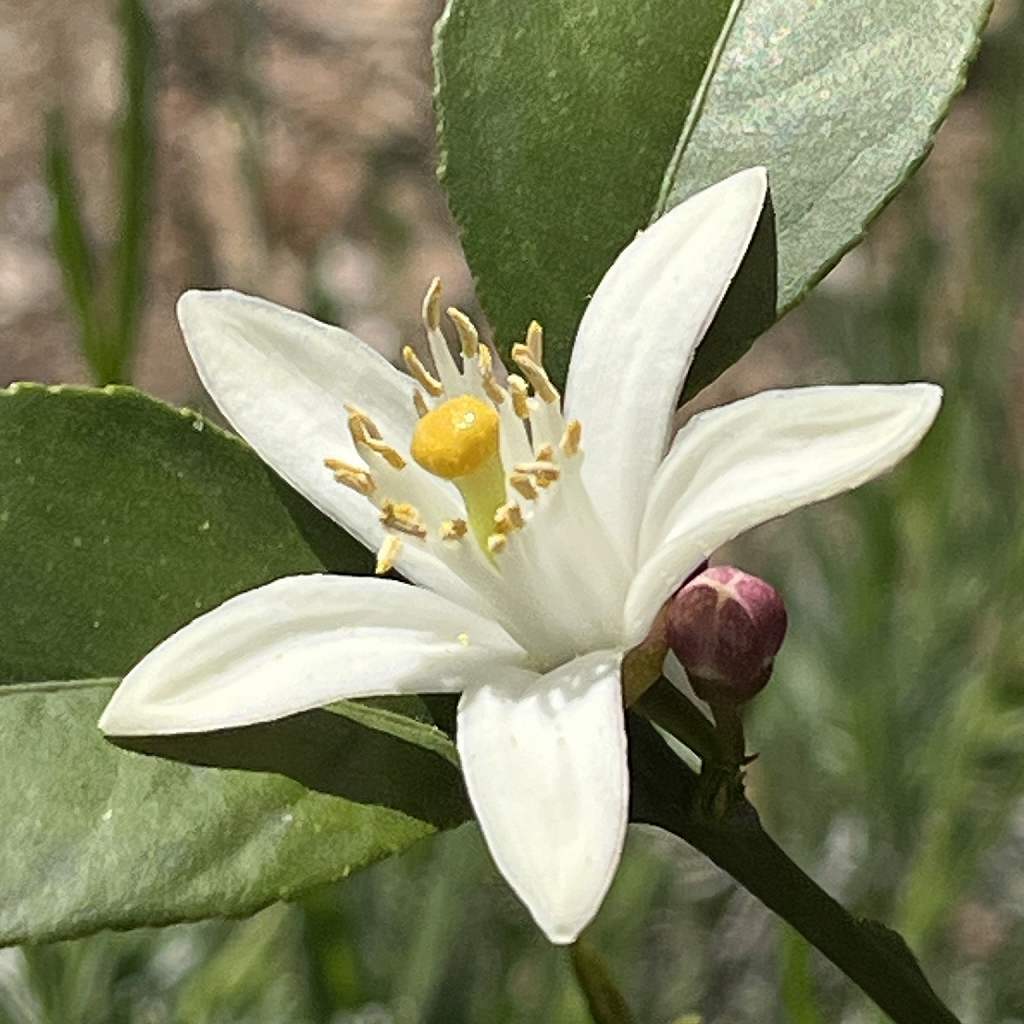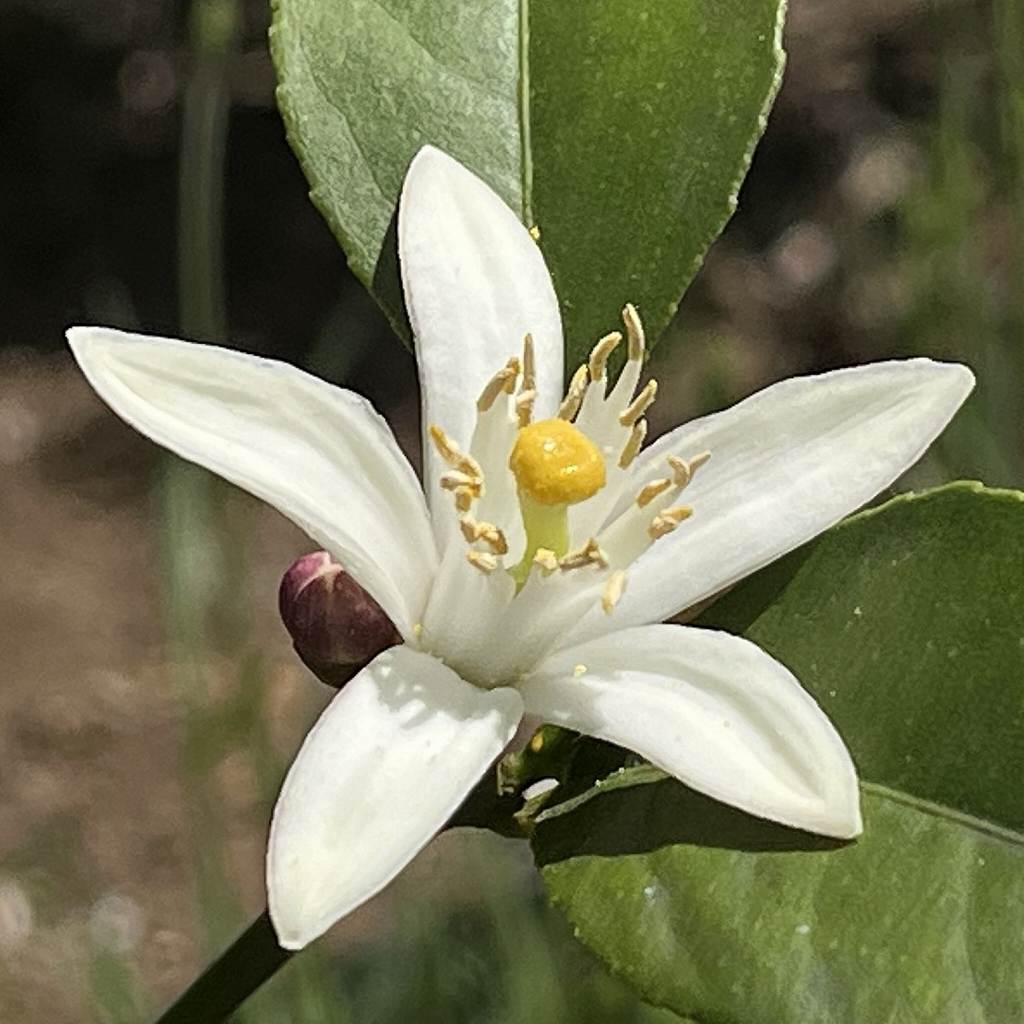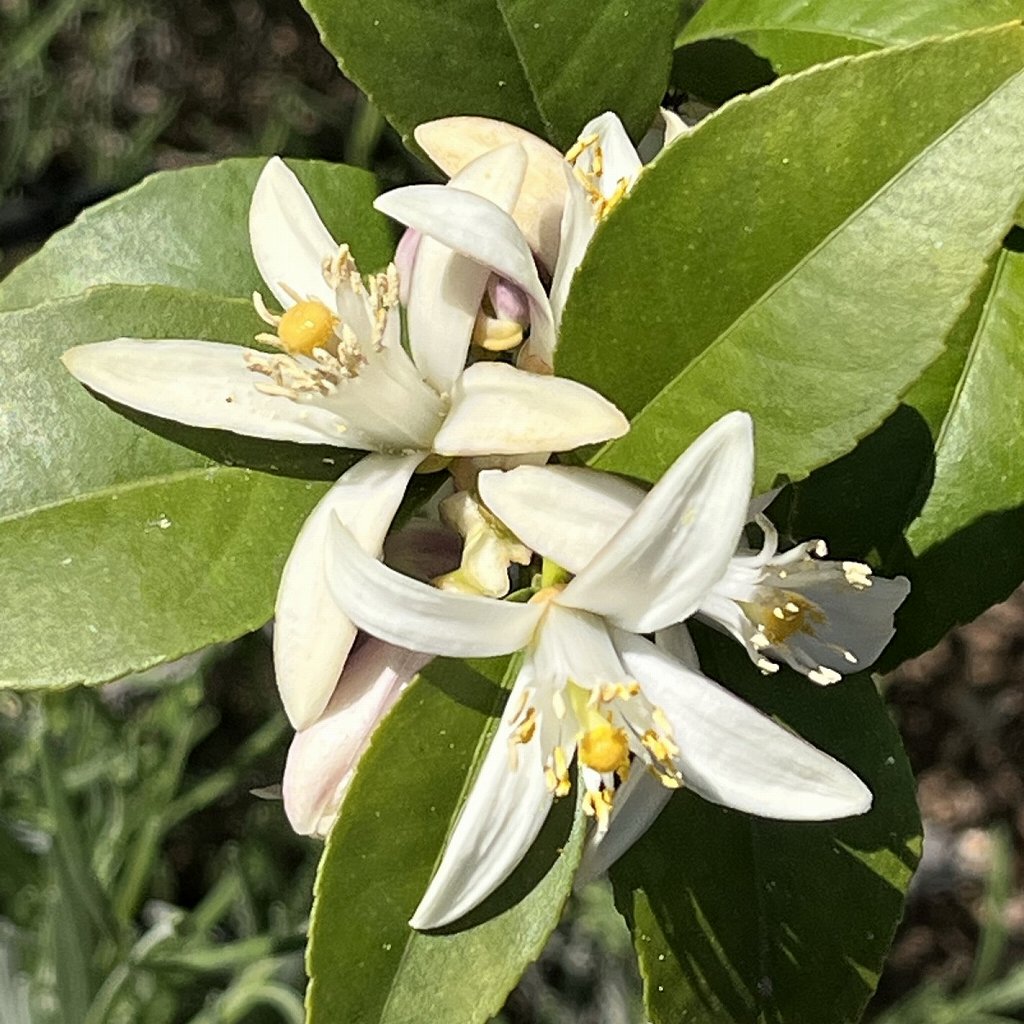レモンの花は甘く爽やかな香り。果実はトパーズ色の香気が立ち、幼馴染の思い出になり、レモネードで愛が広がるなど神妙な力があります。
Lemon flowers have a sweet and refreshing scent. The fruit has miraculous power. Because it gives off a topaz-colored fragrance, brings back memories of childhood friends, and spreads love through lemonade.
【仮名】レモン
【和名】檸檬
【英名】Lemon
【学名】Citrus limon
【誕生】05/ 22, 11/ 12
【開花】04, 05月
【花色】White
レモン
レモンの概要

レモンはミカン科の常緑小高木です。原産地はインド北部のヒマラヤ山麓。有用果樹として世界中に栽培が広がり、日本へは明治時代に伝わりました。花は甘く爽やかな香り。果実はトパーズ色の香気が立ち、幼馴染の思い出になり、レモネードで愛が広がるなど神妙な力があります。
レモンの名前

レモンの名前の由来は南アジアのヒンドゥー語で「リンブー」。もともと原産地ヒマラヤ地方の部族名です。それが栽培の広がりとともに名称も変わり、西アジアのアラビア語でリムン、南欧のイタリア語でリモン、西欧の英語でレモンに。和名の漢字「檸檬」は中国での生薬名です。
レモンの姿形

レモンの木は立ち性で枝にトゲがあります。葉は先端の尖った幅広の披針形で互生。厚く光沢があり、縁に浅く鋸歯が入ります。花は花被片が5枚、雄しべが25本前後、雌しべが突出。花被片は厚く、表面が白色、裏面が赤紫色です。花後の果実は紡錘形。緑色から黄色へと熟します。
レモンの種類

レモンの品種「ユーレカ」は米国で育成されました。果実が大きく、酸味も香りもしっかり。木が低いので手入れしやすく、トゲが少ないので果実が傷みにくく、世界で最も多く栽培されています。一方、「リスボン」はポルトガルで育成。寒さに強く、日本での栽培に適しています。
レモンの逸話

レモンは高村光太郎の詩「智恵子抄」、デューク・エイセスの歌「おさななじみ」などに登場。米国の少女アレクサンドラ・スコットは同じ病を患う子どもたちのために「人生が(酸っぱい)レモンを与えるときは、それで(美味しい)レモネードを作りましょう」と呼びかけました。
Lemon

Lemon is a small evergreen tree in the Rutaceae family. It is native to the foothills of the Himalayas in northern India. Cultivation spread throughout the world as a useful fruit tree, and it was introduced to Japan during the Meiji period. The flowers have a sweet and refreshing scent. The fruit has miraculous power. Because it gives off a topaz-colored fragrance, brings back memories of childhood friends, and spreads love through lemonade.
The origin of the word lemon is “limbu” in South Asian Hindu. This is the name of a tribe that originally lived in the Himalayas, where it originated. As its cultivation spread, its name changed, becoming limun in Arabic in Western Asia, limon in Italian in Southern Europe, and lemon in English in Western Europe. The kanji in the Japanese name is the name of the herbal medicine in China.
Lemon trees are upright and have thorns on their branches. The leaves are alternate, wide lanceolate with a pointed tip. It is thick and shiny, with shallowly toothed edges. The flower has 5 tepals, around 25 stamens, and a protruding pistil. The tepals are thick, white on the upper side and reddish-purple on the underside. The fruits after flowers are spindle-shaped. It ripens from green to yellow.
The Lemon variety “Eureka” was bred in the United States. It has large fruits and a strong acidity and aroma. Because the tree is low, it is easy to care for, and because there are few thorns, the fruit is less likely to spoil, making it the most cultivated tree in the world. “Lisbon”, on the other hand, was bred in Portugal. It is cold tolerant and suitable for cultivation in Japan.
Lemon appears in Kotaro Takamura’s poem “Chiekosho” and the Duke Aces song “Osana Najimi”. American girl Alexandra Scott appealed to children suffering from the same disease by saying, “When life gives you lemons, just make lemonade.”


